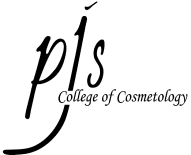September 11, 2025
Advanced Color Correction Techniques: Professional Solutions for Color Disasters

Professional Color Correction: Master Guide to Fixing Hair Color Mistakes
Color correction represents one of the most challenging and lucrative services in professional hair coloring, requiring advanced technical knowledge, problem-solving skills, and extensive experience with color theory. This comprehensive guide provides professional colorists with systematic approaches to analyzing color problems and implementing safe, effective correction procedures.
Understanding Color Correction Fundamentals
Defining Color Correction vs. Color Enhancement
True Color Correction:
- Problem-Solving Focus: Addressing unwanted color results that significantly deviate from client expectations
- Multiple Process Requirement: Usually requires several appointments to achieve desired results safely
- Higher Risk Procedures: Often involves lightening damaged hair or removing stubborn artificial pigments
- Premium Pricing: Commands higher fees due to complexity and time investment
Color Enhancement Services:
- Improvement-Based: Enhancing existing color that’s generally acceptable
- Single-Process Solutions: Can usually be completed in one appointment
- Lower Risk: Working with healthier hair and making subtle adjustments
- Routine Pricing: Standard color service rates apply
Common Causes Requiring Color Correction
Technical Errors:
- Improper Formula Selection: Wrong level or tone choice for desired result
- Processing Time Mistakes: Over-processing or under-processing issues
- Application Errors: Uneven application creating patchy or streaky results
- Developer Selection: Inappropriate volume choice for hair condition or desired lift
Product-Related Issues:
- Incompatible Chemicals: Mixing products that create unexpected reactions
- Expired Products: Old chemicals producing unpredictable results
- Quality Issues: Low-grade products failing to perform as expected
- Metallic Salt Interference: Previous use of compound hennas or metallic dyes
Environmental and External Factors:
- Mineral Deposits: Hard water creating green or orange tints
- Chlorine Damage: Swimming pool chemicals altering hair color
- Sun Exposure: UV damage causing uneven fading and brassiness
- Heat Damage: Excessive thermal styling affecting color retention
Color Problem Analysis and Assessment
Systematic Problem Evaluation
Visual Assessment Protocol:
- Overall Color Evaluation: Document current color level and primary tones
- Sectional Analysis: Identify areas of uneven color or processing
- Root-to-End Assessment: Compare new growth to previously colored hair
- Damage Evaluation: Assess hair condition and elasticity throughout
- Undertone Identification: Determine underlying pigments affecting correction approach
Hair History Documentation
Critical Information to Gather:
- Previous Color Services: Dates, products used, and processing details
- Chemical Service History: Relaxers, perms, or other chemical treatments
- Daily Hair Routine: Heat styling, product usage, and washing frequency
- Environmental Exposures: Swimming, sun exposure, hard water
- Allergies and Sensitivities: Previous reactions to hair products
Strand Testing Protocols
Pre-Correction Testing Requirements:
- Multiple Test Sections: Test different formulations on various problem areas
- Processing Time Trials: Determine safe processing times for different areas
- Porosity Assessment: Evaluate how different sections absorb and release color
- Elasticity Testing: Ensure hair can withstand correction procedures
- Patch Testing: Verify client tolerance to correction products
Lightening Techniques for Color Removal
Bleach-Based Color Removal
Progressive Lightening Approach:
- Multiple Session Planning: Break correction into safe, manageable steps
- Conservative Processing: Avoid over-lightening in single session
- Protein Treatments: Strengthen hair between lightening sessions
- Rest Periods: Allow hair recovery time between intensive treatments
Lightening Product Selection:
Powder Bleach Systems:
- Maximum Lifting Power: Strongest lightening capability for stubborn color
- Heat Generation: Requires careful monitoring to prevent over-processing
- Mixing Ratios: Precise measurements critical for predictable results
- Processing Monitoring: Visual assessment every 5-10 minutes during development
Oil-Based Lighteners:
- Gentler Action: Less harsh on previously damaged hair
- Conditioning Benefits: Built-in conditioning agents protect hair during processing
- Controlled Lifting: More predictable lifting patterns
- Lower Heat Generation: Reduced risk of thermal damage during processing
Clay-Based Lighteners:
- Medium Lifting Power: Good balance of effectiveness and gentleness
- Minimal Expansion: Less product swelling during processing
- Easy Application: Smooth consistency for even distribution
- Versatile Usage: Suitable for various correction scenarios
Color Removal Techniques
Artificial Color Stripping
Commercial Color Removers:
- Sulfur-Based Formulas: Break down artificial color molecules without lightening natural pigment
- Reduction Process: Shrink artificial color molecules for easier removal
- Multiple Applications: May require several treatments for complete removal
- Immediate Neutralization: Requires immediate oxidation to prevent color return
Color Remover Application Protocol:
- Strand Testing: Determine processing time and expected results
- Sectional Application: Apply systematically for even color removal
- Processing Monitoring: Check progress frequently to avoid over-processing
- Thorough Rinsing: Complete removal of stripping agents
- Oxidation Step: Re-oxidize hair to prevent color reversion
- Assessment and Planning: Evaluate results and plan next correction step
Soap Cap Techniques
Gentle Color Removal Method:
- Bleach and Shampoo Mixture: Combines lightening with cleansing action
- Gradual Lifting: Slower, more controllable color removal
- Reduced Damage: Less harsh than straight bleach applications
- Multiple Applications: Can be repeated for progressive improvement
Soap Cap Formulation:
- Powder Bleach: 1 part bleach powder
- Developer: 2 parts low-volume developer (10-20 volume)
- Shampoo: 1 part clarifying shampoo
- Application: Work through hair like shampoo, monitor closely
Specific Color Problem Solutions
Correcting Brassiness and Unwanted Yellow Tones
Understanding Brass Development:
- Incomplete Lightening: Insufficient lifting reveals underlying orange and yellow pigments
- Oxidation Issues: Environmental factors causing color shift over time
- Product Buildup: Mineral deposits creating metallic-looking tones
- Fading Patterns: Natural color fading revealing unwanted undertones
Toning Strategies for Brass Correction:
- Violet-Based Toners: Neutralize yellow tones in levels 9-10
- Blue-Based Toners: Counteract orange tones in levels 7-8
- Ash Series Colors: Deposit cool tones to neutralize warmth
- Progressive Toning: Multiple toning sessions for severely brassy hair
Orange Color Correction Techniques
Orange Tone Causes:
- Under-Lightening: Insufficient bleaching stops at orange stage
- Heat Damage: Thermal styling causing color oxidation
- Chemical Interactions: Conflicting products creating orange tints
- Environmental Exposure: Sun and chlorine causing orange shifts
Blue-Based Correction Methods:
- Blue Toners: Direct neutralization of orange tones
- Ash Brown Applications: Covering orange with cooler brown tones
- Progressive Lightening: Additional lightening followed by toning
- Color Blocking: Strategic placement of corrective colors
Advanced Correction Techniques
Color Melting and Blending Corrections
Fixing Harsh Lines and Demarcations:
- Gradient Technique: Creating smooth transitions between colors
- Strategic Placement: Adding transitional colors to blend harsh edges
- Lowlight Integration: Adding darker tones to blend color levels
- Root Smudging: Softening regrowth lines with strategic color placement
Dimensional Color Corrections:
- Multi-Tonal Approaches: Using various shades to create natural-looking corrections
- Highlight and Lowlight Integration: Combining multiple techniques for comprehensive correction
- Slice and Weave Methods: Strategic sectioning for complex color corrections
- Panel Highlighting: Correcting specific areas while maintaining overall color integrity
Gray Coverage Corrections
Common Gray Coverage Problems:
- Resistant Gray Hair: Stubborn grays that won’t accept color
- Uneven Coverage: Patchy gray coverage creating inconsistent results
- Color Fading: Rapid fading revealing gray regrowth
- Demarcation Issues: Obvious lines between colored and gray hair
Professional Gray Correction Solutions:
- Pre-Softening Treatments: Opening resistant cuticles for better color penetration
- Higher Developer Volumes: Increased lifting power for stubborn grays
- Extended Processing Times: Longer development for complete coverage
- Specialized Gray Formulas: Products designed specifically for resistant gray hair
Managing Severely Damaged Hair During Corrections
Damage Assessment and Safety Protocols
Elasticity Testing Methods:
- Wet Stretch Test: Gently stretch wet hair to assess elasticity
- Normal Response: Hair should stretch 40-50% and return to original length
- Damage Indicators: Hair that breaks immediately or doesn’t return to original length
- Safety Limits: Avoid additional chemical processing on severely compromised hair
Progressive Correction Planning
Multi-Session Approach Benefits:
- Reduced Risk: Lower chance of severe damage or hair breakage
- Better Results: More controlled, predictable outcomes
- Client Safety: Maintains hair integrity throughout correction process
- Professional Liability: Reduces risk of damage claims and reputation issues
Protein Treatment Integration:
- Between-Session Treatments: Strengthen hair between correction appointments
- Processing Preparation: Pre-treat hair before chemical applications
- Post-Service Care: Immediate protein treatments after color removal
- Home Care Protocols: Client maintenance between professional treatments
Chemical Compatibility and Safety
Product Interaction Considerations
Dangerous Chemical Combinations:
- Metallic Salts and Bleach: Can cause severe chemical burns and hair breakage
- Incompatible pH Levels: Products with conflicting pH causing unexpected reactions
- Peroxide Interactions: Multiple oxidizing agents creating unpredictable results
- Ammonia and Acid Combinations: Chemical reactions producing toxic gases
Safety Testing Protocols:
- Strand Testing: Always test product combinations before full application
- Patch Testing: Check for allergic reactions to correction products
- Processing Monitoring: Constant supervision during chemical applications
- Emergency Procedures: Immediate response plans for adverse reactions
Client Communication and Expectation Management
Consultation Strategies for Color Corrections
Setting Realistic Expectations:
- Timeline Communication: Explain multi-session requirements and timing
- Cost Transparency: Provide complete cost estimates for full correction
- Process Education: Help clients understand correction complexity
- Risk Disclosure: Honest discussion of potential damage or limitations
Documentation and Consent
Comprehensive Record Keeping:
- Before Photos: Document starting condition and color problems
- Service Records: Detailed notes on products, timing, and results
- Client Agreements: Written consent acknowledging risks and expectations
- Progress Photos: Document improvement through correction process
Pricing Strategies for Color Corrections
Value-Based Pricing Models
Correction Service Pricing Factors:
- Time Investment: Extended service times requiring premium rates
- Skill Level Required: Advanced techniques commanding higher fees
- Product Costs: Expensive correction products and multiple applications
- Risk Factors: Higher liability requiring appropriate compensation
Consultation and Planning Fees:
- Separate Consultation Charges: Fee for assessment and planning time
- Applied to Service: Consultation fee credited toward correction services
- Complex Case Premiums: Additional charges for extremely difficult corrections
- Rush Service Surcharges: Higher rates for expedited correction timelines
Building Color Correction Expertise
Continuing Education Requirements
Advanced Training Opportunities:
- Manufacturer Education: Brand-specific correction product training
- Celebrity Colorist Workshops: Learning from industry experts
- Corrective Color Certifications: Specialized credentials in color correction
- Peer Learning Groups: Collaborating with other correction specialists
Practice and Skill Development
Building Correction Portfolio:
- Volunteer Opportunities: Offering services to models for portfolio building
- Documentation: Photographing correction processes and results
- Case Studies: Detailed analysis of successful correction projects
- Professional Networking: Building relationships with other correction specialists
Business Development Through Color Correction
Marketing Correction Services
Establishing Expertise Reputation:
- Before and After Portfolio: Showcasing dramatic correction transformations
- Client Testimonials: Success stories from satisfied correction clients
- Educational Content: Blog posts and social media about correction techniques
- Professional Referrals: Building relationships with other stylists for referrals
Operational Considerations
Scheduling and Time Management:
- Extended Appointment Blocks: Booking adequate time for complex corrections
- Emergency Slots: Availability for urgent correction situations
- Follow-Up Scheduling: Planning multi-session correction timelines
- Staff Coordination: Ensuring experienced staff availability for corrections
Future Trends in Color Correction
Technology Integration
Digital Color Analysis:
- Color Matching Software: Computer-assisted color analysis and formula development
- Progress Tracking: Digital documentation of correction progress
- Predictive Modeling: Software predicting correction outcomes
- Client Communication: Visual tools for explaining correction processes
Product Innovations
Advanced Correction Products:
- Gentler Formulations: New chemistry reducing damage during corrections
- Targeted Treatments: Products designed for specific correction scenarios
- Bond Protection: Ingredients maintaining hair integrity during chemical processing
- Smart Color Systems: Products that adapt to individual hair characteristics
At PJ’s College of Cosmetology, our comprehensive cosmetology program includes extensive color theory and correction training that prepares students for advanced color challenges. Our experienced instructors teach both the science and artistry of color correction, ensuring graduates can handle complex color problems safely and effectively.
Students gain hands-on experience with various correction techniques in our student salons, working with real clients under close supervision. This practical training builds the confidence and problem-solving skills necessary for successful color correction practice.
Our curriculum emphasizes safety protocols, client communication, and business aspects of correction services, preparing graduates for immediate success in this highly profitable specialty area.
